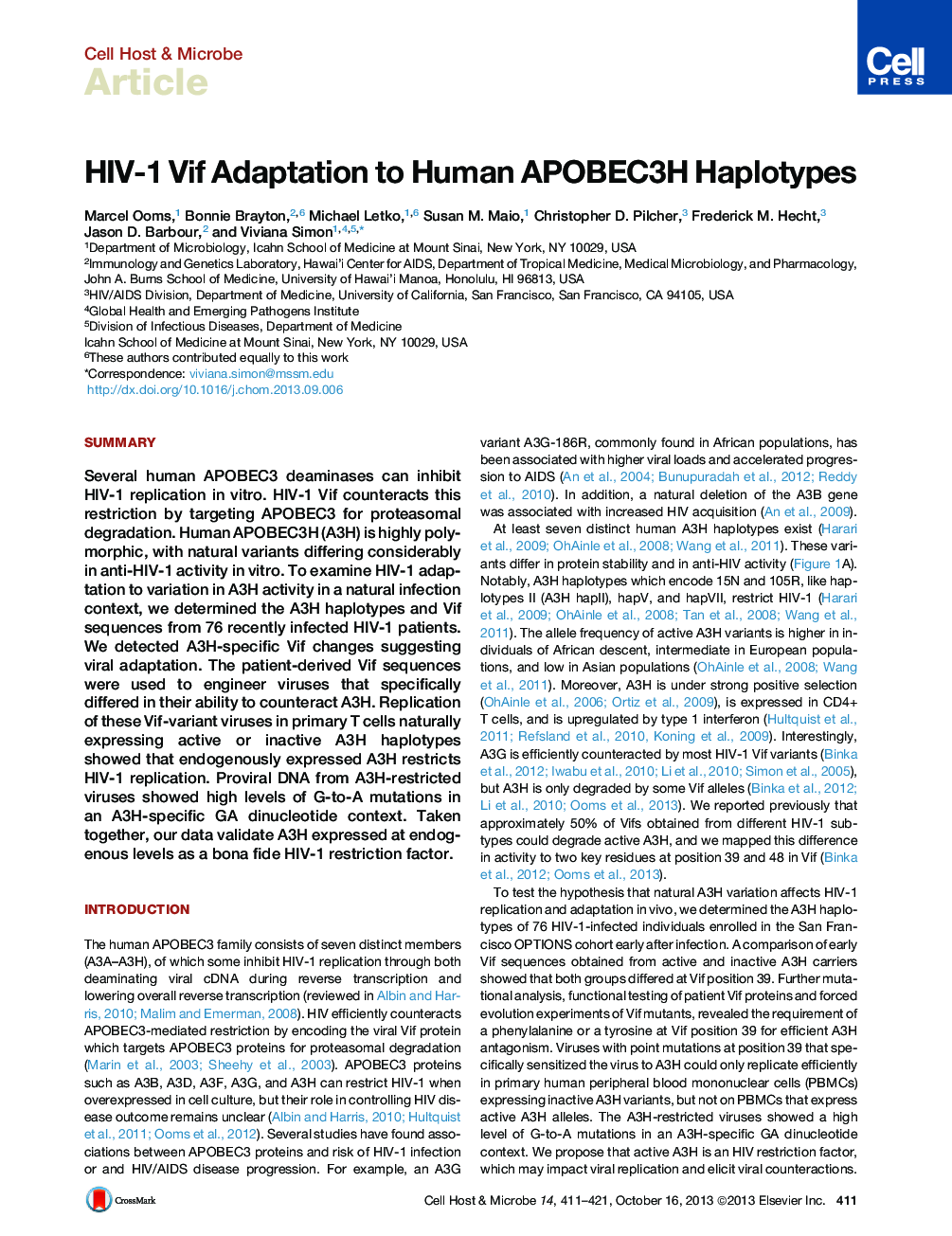| Article ID | Journal | Published Year | Pages | File Type |
|---|---|---|---|---|
| 4361187 | Cell Host & Microbe | 2013 | 11 Pages |
•Patients with active A3H more often have an A3H-resistant HIV•Endogenously expressed A3H restricts HIV replication in primary cells•A3H restriction of HIV in primary cells correlates with proviral editing•The Vif amino acid at position 39 determines degradation efficiency of A3H
SummarySeveral human APOBEC3 deaminases can inhibit HIV-1 replication in vitro. HIV-1 Vif counteracts this restriction by targeting APOBEC3 for proteasomal degradation. Human APOBEC3H (A3H) is highly polymorphic, with natural variants differing considerably in anti-HIV-1 activity in vitro. To examine HIV-1 adaptation to variation in A3H activity in a natural infection context, we determined the A3H haplotypes and Vif sequences from 76 recently infected HIV-1 patients. We detected A3H-specific Vif changes suggesting viral adaptation. The patient-derived Vif sequences were used to engineer viruses that specifically differed in their ability to counteract A3H. Replication of these Vif-variant viruses in primary T cells naturally expressing active or inactive A3H haplotypes showed that endogenously expressed A3H restricts HIV-1 replication. Proviral DNA from A3H-restricted viruses showed high levels of G-to-A mutations in an A3H-specific GA dinucleotide context. Taken together, our data validate A3H expressed at endogenous levels as a bona fide HIV-1 restriction factor.
